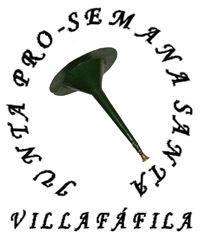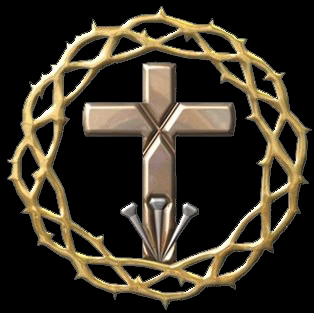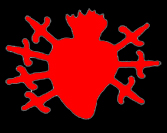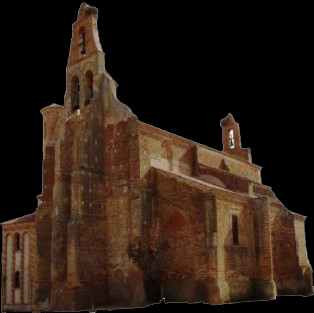|
PALM SUNDAY,
APRIL 13
1:00
p.m. BLESSING
OF THE PALMS, PROCESSION OF THE PALMS and
EUCHARIST
It has been celebrated since the 16th century, documented in
1575, with
which people went out in procession throughout the town, as it
was one of the general processions, attended by all the parish
priests and the church council.
4:30 p.m. HOLY
WEEK PROCLAMATION
Town
crier Mr. AGAPITO GOMEZ GARCIA, born
in Villarrín de Campos, Parish priest of Villafáfila from 1992
to 2022, belonged to the Pro-Holy Week Board of Villafáfila.
5:00
PM IMAGE
AUCTION
Traditional auction
of images and trumpets for processional parades. It has been
held since the beginning of the 19th century, documented in
1820, first at the doors of the church of San Martín, and from
1904 in Santa María del Moral, the images auctioned are and
since that year.
SAN
JUAN 1831, JESUS TIED TO THE COLUMN "ECCE
HOMO" 1906,
MARY 1820. LA PIEDAD "LAS
ANGUSTIAS" 1959,
HOLY BURIAL: CHRIST LIE IN HIS URN "CHRIST
OF THE URN OR DESCENT" 1906.
OUR LADY OF SOLITUDE "SOLITUDE" 1906.
JESUS OF THE NAZARENE "THE
NAZARENE" 1820,
and the TRUMPET
1831.
The
Trumpet ,
whose first documentation dates back to 1744 in the Church of
San Pedro, surely existed long before that, with several from
different processions taking place. The current one possibly
originated from the Brotherhood of Jesus of Nazareth, under
which the auction took place from 1831 until the 1950s. The
brotherhood disappeared, but auctions continue to this day. The
trumpet appears in the Penitence, Encounter, and Holy Burial
processions.
HOLY WEDNESDAY
April 16
11:00
PM. Silent Procession
Created
in 1994 by the Brotherhood of Christ of Mercy, inside the church
of Santa Maria del Moral the members of the brotherhood are
sworn to silence to carry the Christ of Mercy, the Miserere is
sung from the Town Hall by residents of the town, where the
people who accompany the procession go in silence, only broken
by the sounds of a bell and then a rattle, since 2013 it is
playing with the roll of a drum, marking the step, they carry a
banner of Christ and it is carried by a step of 8 members of the
brotherhood.
Parade
-
BROTHERHOOD OF CHRIST
OF MERCY
Created in 1993, made up only of men, their attire is a dark
green velvet tunic, as well as the hood with a white cross,
cape, sash and white gloves and black shoes, they are under the
patronage of Christ of Mercy who belongs to Santa María del Moral.
Renaissance style, mid-16th
century, measures 1.20 m, unknown author, comes
from the church of Santa María del Moral.
Oath
of Silence that is taken from the members of the brotherhood to
go in procession, in the church of Santa María del Moral, if
they do it, God will urge them and if they do not, God will
punish them.
Sung in Latin by residents of the town, from their balcony at
the Town Hall.
HOLY THURSDAY
April 17
6:30 p.m. Celebration
of the Eucharist
of the Lord's Supper
8:00 PM. "PENITENCE" PROCESSION
It has
been celebrated since the 18th century, documented in 1767,
starting from the El Salvador church on Holy Tuesday, in 1861 it
began to parade on Holy Thursday afternoon, and since 1904 it
has started from the Santa María del Moral church.
Parade:
-
JESUS TIED TO THE
COLUMN "ECCE
HOMO"
Baroque style, 18th
century, 1762, measuring
1.30 m, comes from
the El Salvador church, unknown author, popularly called "Ecce
Homo" , an
erroneous name as it is Jesus, tied to the column.
It
is played during the procession.
9:30
p.m. NEXT
TO THE MONUMENT
It has
been done since the 16th century, documented in 1557, on Holy
Thursday the monument was placed to host the exposition of the
Blessed Sacrament in all parishes.
11:30 p.m. Procession
of the True
Cross
Of
the first references we have are from the year 1490 of the
Brotherhood of La Vera Cruz, which was located in the hermitage
of La Vera Cruz, was close to the church of San Andrés and
belonged to it until 1642 ,
when it was suppressed as a church of San Andrés remaining
as an annex of
the church of San Pedro, this became dependent on it, but
the brotherhood continued based in the hermitage, carried
out the "Procession of the Vera Cruz or the Race" which
left on the night of Holy Thursday, the brothers were of two
classes: light, and blood, or, of discipline. They all wore a
tunic or white shirt and hood or hood; those of light carried a
candle and the second were disciplined during the procession,
there were also female brothers in 1717 there were 45, although it
is not specified what type . In 1805,
the Vera Cruz chapel was demolished, and the image of Christ was
moved to the church of San Pedro, from where the procession
would depart from that moment on. After the procession, the
"Parva" (bread and wine) was served . The
rites and penances that took place throughout the night of Holy
Thursday, which kept large numbers of people awake and made the
vigil more bearable with a few sips of wine, would be the origin
of the custom of making lemonade and staying up all night
reveling, which the young people of Villafáfila had followed
since time immemorial. This brotherhood disappeared at the end
of the 19th century, and with it the procession .
This procession was revived in 2010 by the Villafáfila Holy Week
Pro-Kingdom, attempting to make it similar to the traditional
forms. They also added the option of going out dressed in
Castilian cloaks and revived the Parva (bread and pastries),
distributing lemonade and pastries.
PARVA at
the end of the procession there will be the ancient tradition of
lemonade and pastries.
Parade:
Gothic-Flemish style, 15th
century, measuring 1.2
m, years before 1500, comes from the hermitage of Vera Cruz,
author attributable to Alejo de Vahía.
GOOD FRIDAY April
18
9:00 a.m. Procession
of the Meeting
It
has been celebrated since the 18th century, documented in 1714,
it was celebrated under the Brotherhood of Jesus of Nazareth
until the 1950s when the brotherhood disappeared, it left the
church of San Martin, at first only Jesus of Nazareth "The
Nazarene" and
Mary were in procession, these two images at the beginning of
the 19th century began to be auctioned and in 1820 there is a
record, in 1831 Saint John was included in the procession and in
the auction (the image that accompanies the procession is Saint
John the Baptist who has replaced Saint John the Apostle),
surely from this moment on the Meeting took place with
reverences between them in the Plaza Mayor, Since 1953 it leaves
the church of Santa María Moral. Jesus of Nazareth is the most
venerated image in the town. In 1911, when the residents
attempted to have it sold, they started a riot at the gates of
San Martín, which had to be intervened by the Civil Guard. They
did not disperse until the residents were certain that it was
not being sold.
They
parade:
Baroque
style, 17th century towards the middle, measures 1 m, comes from
the church of San Juan, it was its titular, author unknown, it
is Saint John the Baptist but it is carried in procession as
Saint John the Apostle.
Baroque style, 17th
century, measures 1.40 m, comes from the church of San Martín,
in which it appears as "la
Soledad" ,
unknown author.
-
JESUS NAZARENE "THE
NAZARENE"
Baroque style, 17th
century, measures 1.40 m. Unknown artist, comes from
the church of San Martín.
It
is played during the procession.
-
BOWSING IN THE MAIN
SQUARE
They have
been held since 1831, when Jesus of Nazareth, Mary and Saint
John appeared together for the first time in the Plaza Mayor,
where they reverenced one another.
6:30 p.m. HOLY
OFFICES
-
Liturgical Celebration of the Passion and Death of the Lord.
8:30
p.m. Procession
of the Holy
Burial
It is celebrated and documented since the 17th century, the Holy
Burial was paraded: Christ Recumbent in his Urn "la
Urna" and Our
Lady of Solitude "la
Soledad" left
from the church of San Pedro, the Civil Guard escorted the Holy
Burial until the 60s 20th century, since 1904 it leaves from
Santa María del Moral. 1959 Our Lady of Solitude "la
Soledad" stopped being processed and La Piedad "las Angustias" and
Our Lady of Sorrows "la
Dolorosa" were
included. This image has been carried by the Brotherhood of Our
Lady of Sorrows since 2008.
They
parade
-
THE PIETY "THE
ANGUSTIES"
Renaissance style, 16th century, measuring 0.9 m; sculpted
around 1606-1610, it comes from the church of San Pedro, by
Gaspar de Acosta, painter Juan Álvarez de Escobar, popularly
known as "Las Angustias".
-
HOLY BURIAL: CHRIST
LIE IN HIS URN "CHRIST
OF THE URN OR DESCENT"
The Christ is Baroque in
style, dating from the mid-17th century, measuring 1.50 m, and
comes from the Church of San Pedro, by an unknown artist. The
current urn was built by Fernando Legido in 1914 and cost 15
pesetas. The Christ and the urn together make up the Holy Burial,
which is popularly called "the
Urn" .
-
BROTHERHOOD
OF OUR LADY OF SORROWS
Created in 2007, only by
women, their clothing is a black velvet tunic with a cap, yellow
cord, black shoes and gloves, they wear a medal around their
neck, their image of Our Lady of Sorrows "La
Dolorosa" paraded
for the first time in 2008 .
-
OUR. MRS. OF THE PAINS "LA
PAIN"
Baroque style, 17th
century, measures 1.40 m, comes from the church of Santa María
del Moral, unknown author, popularly known as "la
Dolorosa" .
HOLY SATURDAY
April 19
9:00
p.m. Procession
of Our
Lady of Solitude
Created in 1959, it departs from the
church of Santa María del Moral, accompanied only by women in
double file, carrying candles or lanterns and in silence.
Parade
-
Our Lady of Solitude "La
Soledad"
Baroque
style, 17th century, measures 1.40 m. It comes from the church
of San Pedro, unknown author, it is popularly known as "la
Soledad" .
9:00
p.m. EASTER
VIGIL (in
San Agustín del Pozo).
EASTER SUNDAY
April 20
6:00 PM PROCESSION
OF THE MEETING
AND EUCHARIST
Created
in 1959, it leaves the church of Santa María del Moral, in the
Town Hall square, the mantle is changed to Our
Lady of Carmen " El
Carmen" and the
two bow to the
Savior .
They
parade
-
Our Lady of Carmen "El
Carmen"
Baroque style , 17th century ,
measures 1 m, comes
from the church of San Martín, unknown author, popularly known
as "el Carmen" .
Baroque
style, 18th century, 1762, measures 1 m. It comes from the El
Salvador church, artist unknown.
6:30 p.m. EASTER
MASS |




